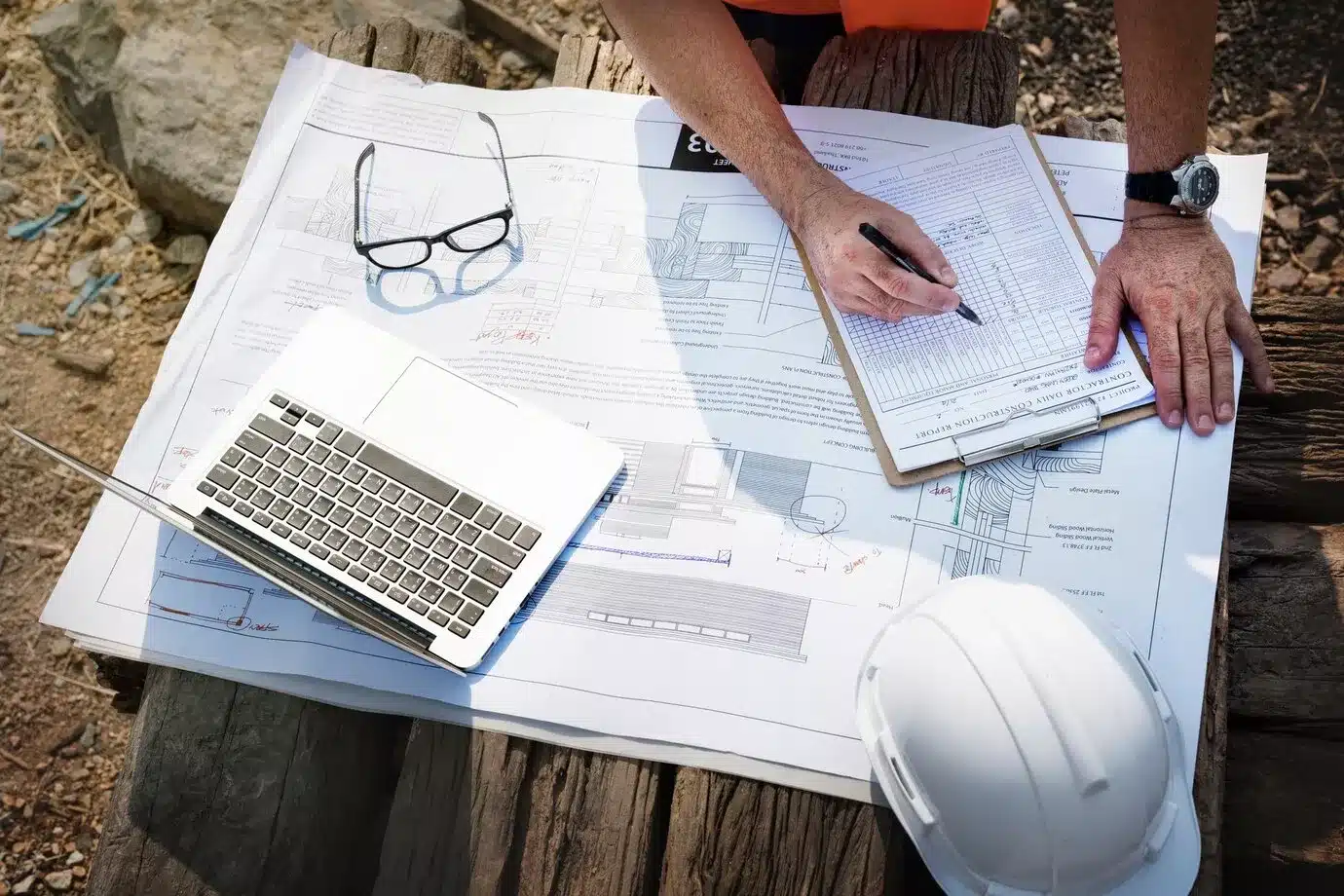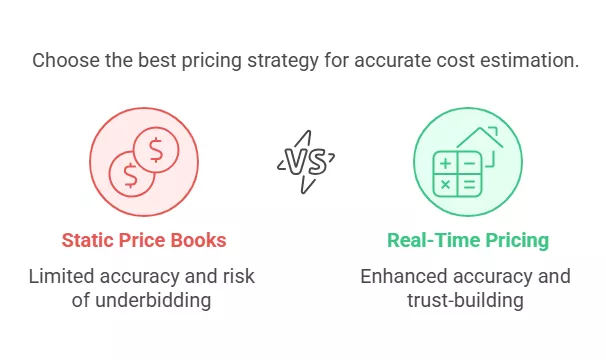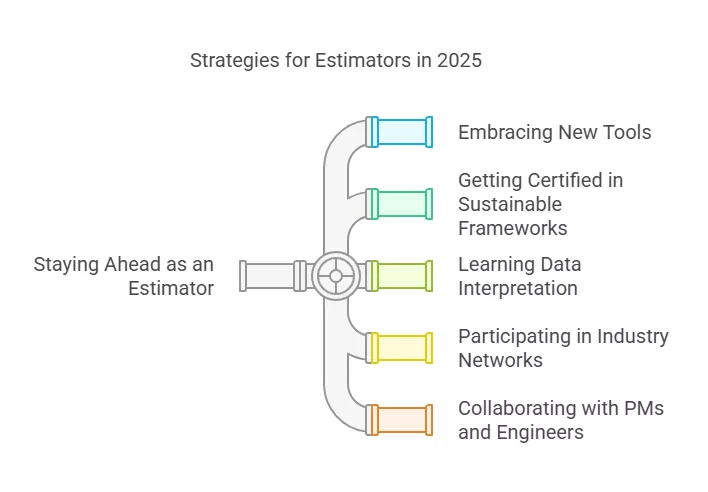Ranked #1 in Accurate and Reliable Estimation Services
A Fastest Turnaround 24 Hours!
Ranked #1 in Accurate and Reliable Estimation Services
A Fastest Turnaround 24 Hours!
Ranked #1 in Accurate and Reliable Estimation Services
A Fastest Turnaround 24 Hours!
Ranked #1 in Accurate and Reliable Estimation Services
A Fastest Turnaround 24 Hours!

The construction industry is on the verge of a digital revolution — and cost estimators are at the frontline.
Still estimating the same way you did five years ago? In 2025, that could cost you more than money — it could cost you the project. The construction landscape is evolving fast, and cost estimators are now expected to be more than number crunchers. They’re becoming strategic thinkers, tech users, and sustainability advisors.
This article unpacks the most critical trends shaping construction in 2025 — from AI-powered estimating to real-time pricing and green compliance — so you can stay sharp, competitive, and in demand.
Artificial intelligence isn’t coming — it’s here. In 2025, AI-driven estimating software is become standard. Tools like Togal.AI and ALICE Technologies use machine learning to automate quantity takeoffs, forecast costs, and even detect errors before bid submission. A McKinsey report noted that global investment in construction tech surpassed $50 billion in 2024, and a large portion went into AI applications.
This doesn’t mean estimators are being replaced. Instead, the role is shifting. Estimators who learn to work with AI — interpreting results, cross-checking projections, and adding human judgment — are more valuable than ever.
Gone are the days of Excel sheets buried in email threads. Modern estimating lives in the cloud. Platforms like Procore, STACK, and CostCertified offer centralized dashboards for drawings, budgets, RFIs, and change orders. Real-time collaboration with project managers, clients, and vendors makes estimating faster, more transparent, and easier to update.
Cloud-based tools also reduce the risk of version conflicts and data loss — two of the biggest time sinks in preconstruction. In a fast-moving bid environment, that’s a serious edge.
Material costs have been anything but stable over the past few years. That volatility continues in 2025, with the Associated General Contractors of America (AGC) reporting a 9% year-over-year spike in materials cost in Q1 alone. For estimators, this makes static price books almost useless.
Today’s leading platforms integrate directly with supplier APIs to pull live pricing data. Services like ConstructConnect and 1build offer real-time cost data for everything from steel to drywall, adjusted by location. This kind of accuracy helps prevent underbidding and builds trust with clients.

Firms that are performing better than the market are now sifting through historical project data to offer more accurate future projections. By measuring the difference between actual and estimated costs, these firms are pattern predicting risks and honing in on the areas where bids are likely to fail. It is insight that matters, not the speed.
Data with instructive value offers analytics firms the ability to forecast obstacles along with labor expenses and even the number of changes that will need to be made to the initial plan. Advanced Estimators equipped with the data are stepping up to the executive level.
Green construction is no longer just a fad; it is being incorporated into policies, contracts, and even building codes. By 2025, numerous municipalities will need carbon accounting, energy modeling, or adherence to some degree of LEED and ESG compliance. This signals that lifecycle costing, carbon emission estimation, and energy-efficient design provisions will have to be incorporated into bid production.
More and more people are using tools such as One Click LCA and EC3, which calculate costs in addition to environmental impact. If you do not plan for sustainable options in your proposal, there is a high chance you will not even reach the negotiation phase.
As projected by the U.S. Bureau of Labor Statistics, the construction sector will be experiencing a lack of over 500,000 skilled workers by the year 2025. That is making ready casters modify their thinking concerning the assumptions on available labor. It has shifted from focusing primarily on wages to how available, reliable, and productive a worker is.
Consequently, many estimators are including modular construction, robotics, and automation as means to curb reliance on scarce labor, which greatly enhances productivity. Anticipate labor contouring to be more tactical, with greater reserves set aside for high-risk trades.
Construction regulations are getting tighter — especially around climate resilience, digital permitting, and worker safety. In 2025, these rules are more fragmented by region than ever before, which complicates estimating for firms that work across state lines.
Estimators now have to consider not just materials and labor, but also the cost of compliance: new inspections, delays due to zoning approvals, and specialized legal reviews. Keeping track of shifting rules through tools like Up Codes or regional boards is becoming part of the job.
With the rise of competition, clients no longer select bids solely based on the price. Clients prefer partners who understand their needs and are strategically beneficial to them. Hence, your estimate is not simply a figure — it is a strategy.
Smart estimators are now customizing bids to meet the specific project priorities of each client and running simulations to offer value engineering options. To put it simply, you’re not pricing, you’re persuading. The companies that understand this are winning more work.
To thrive in this new landscape, estimators need to evolve just as fast as the industry around them. The best way to stay sharp is by:

In 2025, cost estimating is no longer just about math — it’s about insight, foresight, and strategy. The estimators who will thrive are those who combine their technical know-how with new tools, real-time data, and a deep understanding of where the industry is headed. Adaptation is no longer optional — it’s how you stay in the game.
What is the best estimating software in 2025?
STACK, CostCertified, and Togal.AI are leading platforms for speed, collaboration, and automation.
Is AI replacing construction estimators?
Not at all — AI is a tool, not a replacement. Estimators who know how to use it gain a major edge.
Are material costs still unpredictable in 2025?
Yes, and that’s why real-time pricing integrations have become essential for accurate bidding.
How do sustainability goals impact estimates?
They add complexity — from lifecycle costing to compliance fees — but also open up new business opportunities.
0 Comments